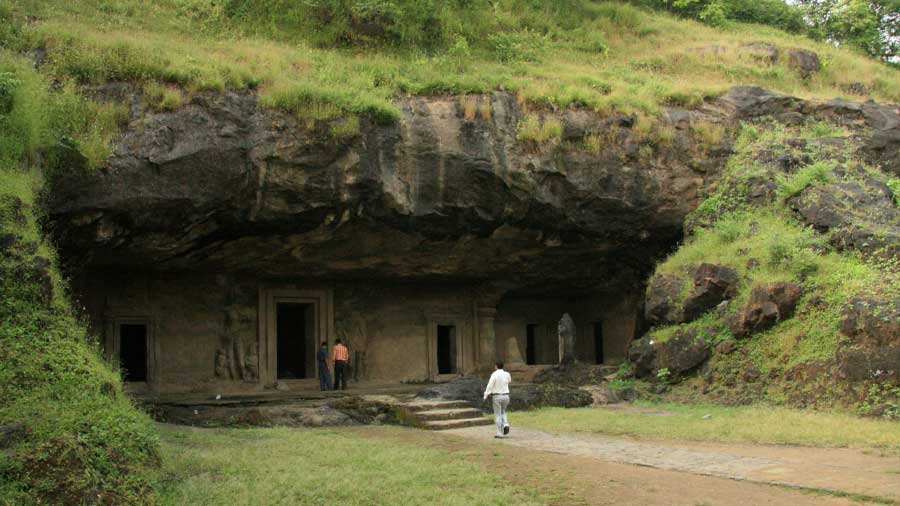Elephanta Caves Quick Facts
| Place | Mumbai, Maharashtra (India) |
| Built in between | 6-8th century |
| Type | Cultural |
| Entrance Fees | Indian: Rs 10, Others: Rs 250 |
| Waking hours | 9 am to 5 pm (Monday Holiday) |
Elephanta Caves Overview
Elephanta Caves located near the city of Mumbai, the financial capital of the country, are famous for the attractive sculptures of mythological deities. Elephanta, also known as Gharapuri in ancient times, was the island capital of Konkani Mauryas. Lord Shiva built in Elephanta caves is the most popular. These sculptures carved out of mountains are inspired by South Indian sculpture, which is one of the main attractions of Maharashtra. A glimpse of Hinduism and Buddhism can be clearly seen in the beautiful sculptures made in the cave.
Elephanta Caves History
According to local Traditions, these caves are not man-made and the credit for their construction is attributed to the heroes and orangutans of the Indian epic Mahabharata, who were devotees of Lord Shiva. In 635 AD, the Badami Chaluksa emperor Pulakesi II (609–642) defeated the Maurya rulers of Konkan in a naval battle.
Some Historians say that these caves have remained in the same time i.e. 6th century AD. According to Wikipedia, these caves are said to be built by the kings of the Silhara dynasty (8100-1260), who ruled here from the ninth century to the thirteenth century.
In the 16th century it was ruled by the Portuguese. The book 'Discourses of Voyages', written by the Portuguese traveler Van Linscoten, indicates that the island was known as Puri or Purika in the 16th century, which was the island capital of the Konkani Mauryas. A very large elephant statue was situated at a place called Rajghat till the sixteenth century. For this reason, the Portuguese kept the Elephanta of this island.
Elephanta Caves Interesting Facts
- This Island is 10 km from the Gateway of India in Mumbai in the state of Maharashtra. Is located at a distance.
- Its diameter is about 4.5 miles (about 7.2 km).
- These caves are divided into two parts, out of which 5 caves are dedicated to Lord Shankar and in the second group there are two Buddhist caves named Stupa Hill.
- Elephanta Caves is a combination of 7 caves, of which Mahesh Murti Cave is the most important.
- The main cave has 26 pillars, in which Shiva is depicted in many forms.
- Among them, the Trimurti statue of Shiva is the grandest. This idol is 23 or 24 feet long and 17 feet high. This idol depicts three forms of Lord Shiva.
- The main part of the cave has open ends on three sides apart from porticos and its rear side has a square space of 27 meters and is supported by 6 pillars.
- The Uma Mahesh Guha temple was built around the 8th century by rock carving in the Elephanta hill.
- The Uma Mahesh Guha temple was discovered around the 8th century by the Rashtrakuta kings ruling this region between 757-973.
- Amazing pictures of Mahayogi, Nateshwar, Bhairav, Parvati-Parinay, Ardhanarishvara, Parvatiman, Kailashdhari Ravana, Maheshmurti Shiva and Trimurti are seen in these caves.
- These amazing caves are also called 'Temple Caves' due to the various forms of Lord Shankar. The marriage of Shiva-Parvati is also beautifully depicted here.
- These caves were declared a World Heritage Site by UNESCO in 1987.
- It is maintained by the Department of Archaeological Survey of India (ASI).
- From here a boat departs after every thirty minutes which runs only from 9 in the morning to 12 in the afternoon.
- A mini train also runs from near the port to the entrance of the caves, which costs only Rs 10 per person.

